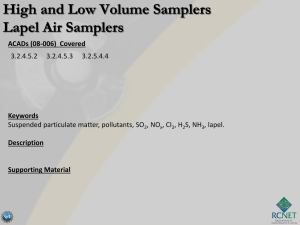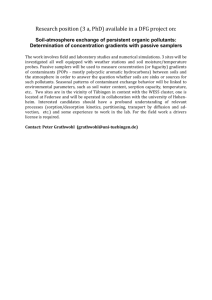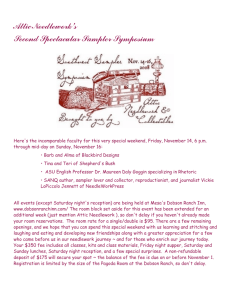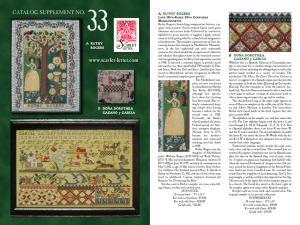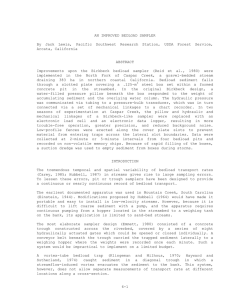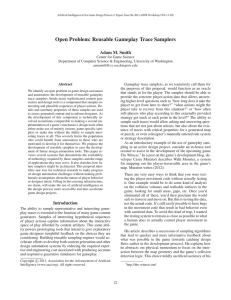Measurements of stream sediment
advertisement
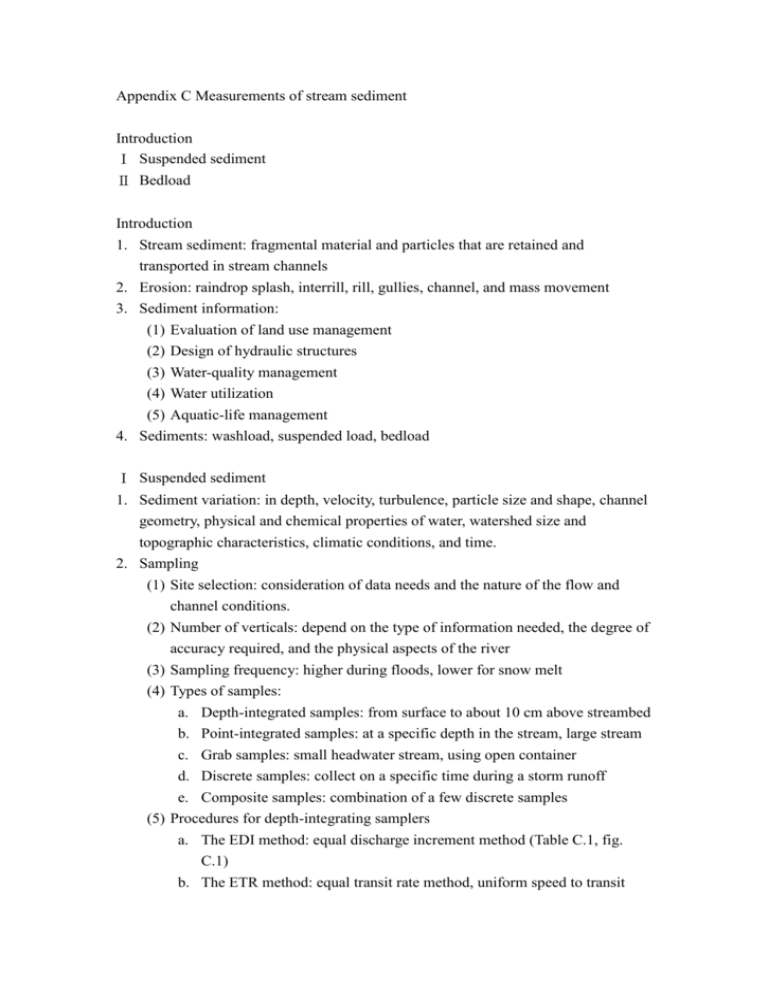
Appendix C Measurements of stream sediment Introduction Ⅰ Suspended sediment Ⅱ Bedload Introduction 1. Stream sediment: fragmental material and particles that are retained and transported in stream channels 2. Erosion: raindrop splash, interrill, rill, gullies, channel, and mass movement 3. Sediment information: (1) Evaluation of land use management (2) Design of hydraulic structures (3) Water-quality management (4) Water utilization (5) Aquatic-life management 4. Sediments: washload, suspended load, bedload Ⅰ Suspended sediment 1. Sediment variation: in depth, velocity, turbulence, particle size and shape, channel geometry, physical and chemical properties of water, watershed size and topographic characteristics, climatic conditions, and time. 2. Sampling (1) Site selection: consideration of data needs and the nature of the flow and channel conditions. (2) Number of verticals: depend on the type of information needed, the degree of accuracy required, and the physical aspects of the river (3) Sampling frequency: higher during floods, lower for snow melt (4) Types of samples: a. Depth-integrated samples: from surface to about 10 cm above streambed b. Point-integrated samples: at a specific depth in the stream, large stream c. Grab samples: small headwater stream, using open container d. Discrete samples: collect on a specific time during a storm runoff e. Composite samples: combination of a few discrete samples (5) Procedures for depth-integrating samplers a. The EDI method: equal discharge increment method (Table C.1, fig. C.1) b. The ETR method: equal transit rate method, uniform speed to transit (6) Procedures for point-integrating samplers: one-, two-, three-, and five-point methods. 0.6d 3. Measuring devices (1) Hand-operated samplers a. Depth-integrating sampler: US DH-48 (fig. C.2) b. Point-integrating sampler: US P-61 (fig. C.3) (2) Automatic samplers a. Mechanical samplers (a) Coshocton-wheel runoff sampler: (fig. C.4, Table C.1) (b) Single, rising-stage sampler: siphon principle, remote sites b. Electrical pumping samplers: 0.5d (fig. C.5) c. Optical turbidity systems (a) Jackson turbidity units (JTU) (b) Nephelometric turbidity units (NTU) d. Acoustic Doppler current profiler: sound by water currents e. Radioactive turbiometric gages: 4. Calculations (1) Suspended-sediment load for a cross section: equation C.2, C.3 (2) Mean suspended-sediment concentration: equation C.4 (3) Suspended-sediment load for a runoff event: equation C.5 Ⅱ Bedload 1. Bedload variation: depends on stream discharge (fig. C.6) 2. Sampling (1) Sand-bed rivers: Dutch Arnhem sampler (fig. C.7) (2) Coarse sand and coarse gravel: Helley-Smith sampler (fig. C.8) and VUV sampler (fig. C.7) 3. Measuring devices (1) Bedload samplers a. Basket-type samplers b. Tray samplers c. Pressure-difference samplers: fig. C.8 d. Sediment traps (2) Tracers (3) Acoustic and ultrasonic measurement 4. Calculations: equation C.6, C.7
